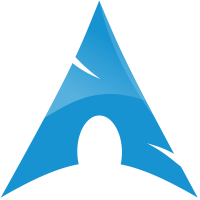A typical desktop Linux distribution consists of various software components including the Linux kernel, a broad collection of programming tools produced by the GNU Project, a graphical server, and other free and open source software.
Due to Linux’s open source nature, there are many hundreds of actively maintained distributions or ‘distros’ of the OS. Linux distros are like Linux software in general. They come and (some) go.
A few weeks ago we carried an article which tracked Linux distributions placed in the top 15 in 2006 on Distrowatch’s page hit ranking. The article proved popular, in part because it stoked controversy about the relevancy of the page hit ranking. We don’t use their hit ranking as a gauge of the popularity or usage of a specific distribution. But neither is there any evidence to show the page hit ranking is rigged. Instead, the hit ranking acts as a rough barometer of which distributions are attracting interest.
In this article, we’re looking at the distributions that were placed in 16-30 positions in 2006. The distributions occupying these slots were (in order): Zenwalk, Puppy, SLAX, Sabayon, KANOTIX, Xandros, Arch, PC-BSD, Xubuntu, Freespire, Elive, Red Hat, Nexenta, Frugalware, and Linspire.
It’s fascinating to see how these distributions fared over the past 14 years. Are they still going strong, are they outclassed by other distributions, or are they only remembered like fingerprints on an abandoned handrail?
The riser
 Out of the distros in question, Arch is the only one that features in the top 16. It fully merits its position. Arch is one of the finest cutting-edge distros offering excellent customization, good documentation, and a supportive community with the awesome Arch User Repository.
Out of the distros in question, Arch is the only one that features in the top 16. It fully merits its position. Arch is one of the finest cutting-edge distros offering excellent customization, good documentation, and a supportive community with the awesome Arch User Repository.
Arch suffers from a perception of user-unfriendliness. It’s true that to get a fully working graphical desktop requires effort from the user. But it’s the father figure for a number of Arch-based distros, offering easier installation and configuration.
The fallers
 First appearing in 2003 and still going strong, Puppy Linux (22nd) has long been regarded as one of the easiest distros to use. Actually, Puppy Linux is a collection of multiple Linux distros. There are official Puppy distros, woof-built distros, and unofficial derivatives. Most of them use JWM as their default window manager.
First appearing in 2003 and still going strong, Puppy Linux (22nd) has long been regarded as one of the easiest distros to use. Actually, Puppy Linux is a collection of multiple Linux distros. There are official Puppy distros, woof-built distros, and unofficial derivatives. Most of them use JWM as their default window manager.
Whatever flavor you use, Puppy is famed for being a lightweight and compact distro that brings older hardware back to life. Remove graphical frippery. The latest version is built from Ubuntu 20.04 packages and offers binary compatibility.
Xubuntu (33rd) is a community-maintained derivative of Ubuntu. It uses the Xfce desktop environment in place of Ubuntu’s GNOME desktop. Xubuntu is still going strong.
Red Hat Enterprise Linux (54th) is a hugely important distribution developed by Red Hat and focused on the commercial market. Given its commercial leaning, it’s not surprising that DistroWatch’s tracker vastly underrates this distro, as it’s targeted for enterprise environments. Red Hat sponsors the community-based Fedora which is targeted for home use. Nowadays, Red Hat is a subsidiary of IBM.
Elive (70th) is a Debian-based desktop Linux distribution and live CD featuring the Enlightenment window manager. Sabayon (93rd) is a beginner-friendly Gentoo-based distro. Slax (112th) is a Debian-based LiveCD Linux distro.
Further down the pile are Zenwalk (117th), a Slackware-based distro with a goal of being slim and fast. KANOTIX (167th) is another Debian-based distro, this time originating from Germany. Freespire (196th) is rather unusual. By 2008 it was discontinued, but phoenix from the flames like, it was brought back to life. It’s now based on Ubuntu.
Linspire (218th) is a commercial distro based on Debian/Ubuntu that has stoked controversy among the free software community.
Departed distros
 Xandros Desktop was based on Corel Linux, a Debian-based distro. We had a fond spot for Xandros, in part because it was pre-installed on the Asus Eee PC, the first mainstream netbook. Sadly, Xandros Desktop saw its last release in 2007. Xandros went on to purchase Linspire the following year although that largely went unnoticed.
Xandros Desktop was based on Corel Linux, a Debian-based distro. We had a fond spot for Xandros, in part because it was pre-installed on the Asus Eee PC, the first mainstream netbook. Sadly, Xandros Desktop saw its last release in 2007. Xandros went on to purchase Linspire the following year although that largely went unnoticed.
Frugalware was a general purpose Linux distro designed for intermediate users. The last release was in September 2016 and can reasonably be described as abandoned.
The final 2 operating systems featured here aren’t actually Linux distros, but they are Unix-like.
TrueOS (previously PC-BSD) was a Unix-like operating system with an initial release back in 2006. Its demise is very recent. The developers decided to discontinue this distro earlier this year citing there was insufficient community demand for what the distro was trying to achieve even after making the decision to become a downstream fork of FreeBSD.
Like TrueOS, Nexenta did not use the Linux kernel. Instead it was based on OpenSolaris. Nexenta saw its last release in 2010. An operating system that falls into the forgotten category.
Current positions (shown in brackets) reflect an averaged position over the past 12 months.
All the articles in this series:
| Now and Then - See How Promising Open Source Software Has Fared | |
|---|---|
| DFileManager | A venerable file manager |
| More Distributions | The fate of 15 more distributions |
| Programming Languages | Go, Rust, Dart, Julia, Clojure, Elixir and more |
| File Managers | SpaceFM, gentoo, Marlin, Eagle Mode, and Beesoft Commander |
| Distributions | The fate of 15 distributions |
| Lean Desktop Environments | Xfce, ROX Desktop, LXDE, FVWM-Crystal, EDE, and Étoilé |
| IDEs | Brackets, Light Table, Julia Studio, Dart Editor, and Aptana Studio |
| Music Players | qomp, Lollypop, Yarock, Pragha, and Volumio |
| Web Browsers | eww, Liri, Vivaldi, Ubuntu Internet Browser, Fifth, Dooscape, and Breach |
| Terminal Emulators | Terminology, Cool-Retro-Term, and Final Term |
